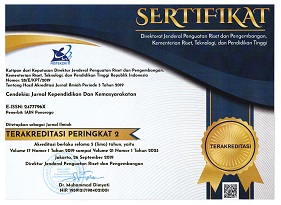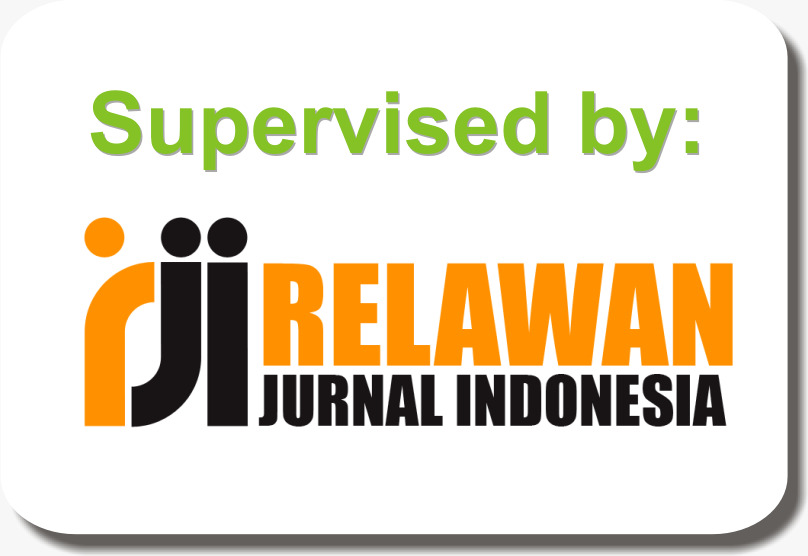The Relevance of Religious Commodification in Ecranization of Films to the Internalization of Islamic Education in Higher Education
DOI:
https://doi.org/10.21154/cendekia.v22i1.8775Keywords:
commodification of religion; ecranization; film; Islamic educationAbstract
This research examines factual issues, religious values, and forms of religious commodification in religious films into films and its relevance to internalizing Islamic education in higher education. Issues related to this topic are essential because the influence of movies is significant on students' character. Internalizing religious values in students requires effective media. One of them is film. This research employed a qualitative descriptive approach. This study analyzed the movie as a learning media. There are three results obtained in this study. First, factual issues of religious issues are used by film producers to gain economic benefits. Second, the religious values in the film can attract the public's attention to religious films. It is a form of commodification of religion in producing films. Third, there is a relevance between religious films and the internalization of Islamic education in higher education.
References
Appadurai, Arjun. Modernity at Large: Cultural Dimensions of Globalization. 7th ed. Minneapolis London: University of Minnesota Press, 2005.
Aryasatya, Agustian Bhaskoro Abimana. “Komodifikasi Agama melalui Iklan Televisi (Studi Kasus Iklan Televisi Berlabel Halal).” Jurnal Pustaka Ilmiah 4, no. 1 (2019): 515-517.
Asbar, Andi Muhammad, and Agus Setiawan. “Nilai Aqidah, Ibadah, Syariah dan Al-Dharuriyat Al-Sittah sebagai Dasar Normatif Pendidikan Islam.” AJIE: Al Gazali Journal of Islamic Education 1, no. 1 (2022): 87-101.
Asri, Rahman. “Membaca Film sebagai Sebuah Teks: Analisis Isi Film ”˜Nanti Kita Cerita Tentang Hari Ini (NKCTHI).” Jurnal Al Azhar Indonesia Seri Ilmu Sosial 1, no. 2 (2020): 75-86.
Asri, Tanti Dani. ”˜Efektifitas Media Massa sebagai Saluran Pesan Dakwah (Studi Komparasi Novel Negeri 5 Menara dan Film Negeri 5 Menara’. Thesis, UIN Sunan Kalijaga Yogyakarta, 2013.
Ependi, Rustam. Nilai-nilai Pendidikan Islam (Integrasi Konsep Aqidah, Akhlak, Ibadah dan Sosial dalam Alquran). Yogyakarta: Deepublish, 2020.
Ertman, Martha and Joan C. Williams. Rethinking Commodification: Cases and Readings in Law and Culture. New York: New York University Press, 2005.
Fauzi, Ahmad, Ibnu Elmi AS Pelu, and Nornazira Suhairom. “Local Wisdom of Pesantren as Core Value in Building an Islamic Education Organizational Culture in Indonesia.” Cendekia: Jurnal Kependidikan dan Kemasyarakatan 21, no. 1 (2023): 16-28.
Hakim, Lukman, Hasrul Rahman, and Robby Yudhi Nurhana. “Stereotip Perempuan dan Budaya Patriarkal Berlatar Islam dalam Novel Religi Best Seller Tahun 2000-2021.” Muslim Heritage 8, no. 1 (2023): 153-165.
Hanifah, Rifka, Vinda Fauziah Hamdani, and Ajeng Setia Utari. “Komodifikasi, Spasialisasi, dan Strukturasi dalam Instagram (Studi Deskriptif Ekonomi Politik Komunikasi Vincent Mosco pada Instagram Anies Baswedan Terkait Covid-19).” Jurnal Komunikatio 7, no. 1 (2021): 5-7.
Haryanto, Dwi, and Bambang Aris Kartika. “Komodifikasi Agama pada Media Sinema sebagai Strategi Jualan Industri Perfilman Indonesia.” Journal of Urban Society's Arts 4, no. 2 (2017): 61-70.
Hasan, Kamaruddin. “Kajian Ekonomi Politik Media (Hiperealitas Ruang Politik Publik).” At-Tanzir: Jurnal Ilmiah Prodi Komunikasi Penyiaran Islam 8, no. 2 (2017): 199-213.
Herlinawati, Ikhya Ulumudin, Sisca Fujianita, and Ferdi Widiputera. Persepsi Masyarakat terhadap Perfilman Indonesia. Jakarta: Pusat Penelitian Kebijakan, Badan Penelitian dan Pengembangan dan Perbukuan, Kementerian Pendidikan dan Kebudayaan, 2020.
Hidayati, Al Fida, and Yuanita Aprilandini Siregar. “Commodification of Local Culture in the Development of Wayang Villages Tourism.” Baileo: Jurnal Sosial Humaniora 1, no. 2 (2024): 176-191.
Istadiyantha, and Riana Wati. Ekranisasi Sebagi Wahana Adaptasi dari Karya Sastra ke Film. Surakarta: UNS Press. 2015.
Istighfarin, Firly Rachmah, and Magvira Yuliani. “Media dan Komodifikasi Keberpihakan Politik: Analisa Ekonomi Politik MNC Media Group.” Intelektiva : Jurnal Ekonomi, Sosial & Humaniora Media 2, no. 1 (2020): 56-66.
Kementerian Agama RI. Moderasi Beragama. Jakarta: Badan Litbang dan Diklat Kementerian Agama RI, 2019.
Kolker, Robert Philip. Film, Form, and Culture. New York: McGraw-Hill Education, 2002.
Muslih. Pendidikan Islam di Negeri Belanda (Sejarah, Tantangan, Dan Prospek). Semarang: Shouteast Asian, 2019.
Naamy, Nazar, and Ishak Hariyanto. “Moderasi Beragama di Ruang Publik dalam Bayang-bayang Radikalisme.” Sophist: Jurnal Sosial Politik Kajian Islam dan Tafsir 3, no. 2 (2021): 41-59.
Novitasari, Dian, and Ianatut Thoifah. “Meta-Synthesis Profile of Islamic Religious Education Graduates in Indonesia.” Cendekia: Jurnal Kependidikan dan Kemasyarakatan 21, no. 2 (2023): 285-297.
Panani, Muhammad Farqi. ”˜Representasi Kehidupan Pondok Pesantren Modern dalam Film Negeri 5 Menara’. Thesis, Universitas Pasundan, 2017.
Saputra, Asep Deni. “Perempuan Subaltern dalam Karya Sastra Indonesia Poskolonial.” Literasi: Indonesian Journal of Humanities 1, no. 1 (2011): 16”“30.
Sari, Wasvita. “Fenomena Ekonomi Politik Komunikasi di Indonesia (Studi Kasus Komodifikasi Hijab dalam Iklan Hijab Fresh Body & Lotion Unilever).” Jurnal Penelitian Pers dan Komunikasi Pembangunan 24, no. 1 (2020): 1-11.
Sufirmansyah. “Manifestation of Integrated-Andragogic Islamic Education Based on Kitab Kuning in Indonesian Pesantren.” Cendekia: Jurnal Kependidikan dan Kemasyarakatan 21, no. 1 (2023): 135-147.
Sumarno and Kayan Swastika. “The Function of Wayang Kulit in the Spreading of Islamic Religy in Demak at 16th Century.” Jurnal Historica 2, no. 1 (2018): 81-83.
Sumawinata, Shiska, Toto Suryana, and Ganjar Eka Subakti. “Wayang as a Media for Spreading Islam in the Archipelago.” El Tarikh: Journal of History, Culture and Islamic Civilization 3, no. 2. (2022): 96-111.
Surahan, Sigit, Annisarizky, and Rully. “Alamat Redaksi (Journal Address).” Nyimak: Journal of Communication 3, no. 1 (2019): 15-29.
Syah, Hakim. “Dakwah dalam Film Islam di Indonesia (Antara Idealisme Dakwah dan Komodifikasi Agama).” Jurnal Dakwah UIN Sunan Kalijaga 14, no. 2 (2013): 263-282.
Wibowo, Ari. “Commodification of Religion: An Edugama.” Journal of Education and Social Religion 6, no. 1 (2020): 56-74.
Yustati, Herlina. “Implikasi Strategi Pemasaran melalui Komodifikasi Agama di Indonesia.” Al-Intaj 3, no. 2 (2017): 304-323.
Zaini, Ahmad. ”˜Komodifikasi Nilai Islam dalam Film Indonesia Bernuansa Dakwah (Telaah Terhadap Film Laskar Pelangi, Ketika Cinta Bertasbih 1 & 2, dan Mencari Hilal’. Thesis, Universitas Islam Negeri Walisongo Semarang, 2019.
Downloads
Published
Issue
Section
License
Copyright & License
Please find the rights and licenses in Cendekia: Jurnal Kependidikan dan Kemasyarakatan. By submitting the article/manuscript, the author(s) agree with this policy. No specific document sign-off is required.
1. License
The non-commercial use of the article will be governed by the Creative Commons Attribution license as currently displayed on the Creative Commons Attribution-NonCommercial 4.0 International License.
2. Author(s)' Warranties
The author warrants that the article is original, written by the stated author(s), has not been published before, contains no unlawful statements, does not infringe the rights of others, is subject to copyright that is vested exclusively in the author and free of any third party rights, and that any necessary written permissions to quote from other sources have been obtained by the author(s).
3. User/Public Rights
The spirit of Cendekia: Jurnal Kependidikan dan Kemasyarakatan is to disseminate articles published as free as possible. Under the Creative Commons license, Cendekia: Jurnal Kependidikan dan Kemasyarakatan permits users to copy, distribute, display, and perform the work for non-commercial purposes. Users will also need to attribute authors and Cendekia: Jurnal Kependidikan dan Kemasyarakatan on distributing works in the journal and other media of publications. Unless otherwise stated, the authors are public entities as soon as their articles got published.
4. Rights of Authors
Authors retain all their rights to the published works, such as (but not limited to) the following rights;
- Copyright and other proprietary rights relating to the article, such as patent rights,
- The right to use the substance of the article in own future works, including lectures and books,
- The right to reproduce the article for own purposes,
- The right to self-archive the article,
- The right to enter into separate, additional contractual arrangements for the non-exclusive distribution of the article's published version (e.g., post it to an institutional repository or publish it in a book), with an acknowledgment of its initial publication in this journal (Cendekia: Jurnal Kependidikan dan Kemasyarakatan).
5. Co-Authorship
If the article was jointly prepared by more than one author, any author submitting the manuscript warrants that he/she has been authorized by all co-authors to be agreed on this copyright and license notice (agreement) on their behalf and agrees to inform his/her co-authors of the terms of this policy. Cendekia: Jurnal Kependidikan dan Kemasyarakatan will not be held liable for anything arising due to the author(s) internal dispute. Cendekia: Jurnal Kependidikan dan Kemasyarakatan will only communicate with the corresponding author.
6. Royalties
Being an open accessed journal and disseminating articles for free under the Creative Commons license term mentioned, the author(s) are aware that Cendekia: Jurnal Kependidikan dan Kemasyarakatan entitles the author(s) to no royalties or other fees.
7. Miscellaneous
Cendekia: Jurnal Kependidikan dan Kemasyarakatan will publish the article (or have it published) in the journal if the article's editorial process is completed. The editors of Cendekia: Jurnal Kependidikan dan Kemasyarakatan may modify the paper to a style of punctuation, spelling, capitalization, referencing, and usage that deems appropriate. The author acknowledges that the article may be published so that it will be publicly accessible, and such access will be free of charge for the readers, as mentioned in point 3.

















